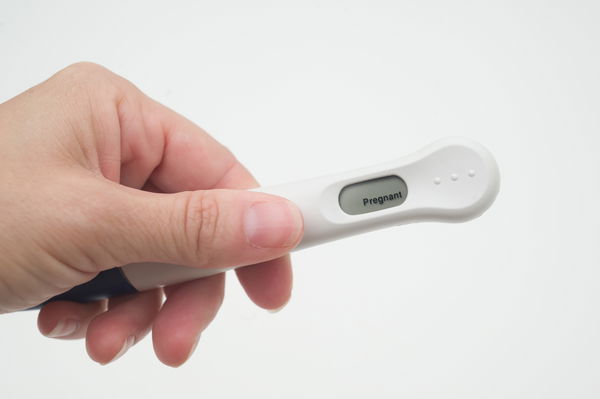Highlights
Legislative momentum appears to be moving towards a federal, universal paid leave act, such as the FAMILY Act (Family Medical Insurance Leave Act) recently introduced by Sen. Kristen Gillibrand (D-NY), or the New Parents Act from Sen. Senator Marco Rubio (R-FLA). Because these proposals tend to focus on new parenthood, I worked with the Center for Public Justice to write a report on the intersection of elder care and paid family leave.
Approximately 41.3 million Americans provide unpaid elder care each year. Many juggle full-time jobs with private care responsibilities. On average, they spend nearly three hours a day providing care, and can spend nearly $7,000 per year on out-of-pocket expenses related to caregiving.
Last fall, Rachel Anderson and I wrote here about the “invisible workforce” of elder caregivers. We identified three categories of elder caregivers, inspired by the pioneering work of hospice physician, Dr. Joanne Lynn, which evolved and expanded in my new report, Called to Care.
1. The Roller Coaster
The first period of care is what I call “the Roller Coaster,” which is basically a long-term period of support requiring intermittent periods of acute care. Care recipients tend to live independently but still experience periods of time when acute help or immediate intervention is needed. Neurological disease and general physical decline tend to define this journey. Caregivers must be willing to drop work and family responsibilities quickly to respond to a crisis.
For caregivers on the roller coaster of care, access to sick leave that can be used for care responsibilities is helpful. Several states have caregiver leave acts, like Illinois’ Employee Sick Leave Act, that follow the model legislation promoted by AARP.
2. The Marathon
Another period identified in the report is “the Marathon,” which is a long-term period of continual support. Care recipients tend to decline in mobility and mental acuity slowly, but persistently, over decades. Dementia and Alzheimer’s disease are common ailments. Many of these caregivers reduce their work hours, take a leave of absence from paid employment, or retire early to care for a family member.
For caregivers on the marathon of care, the ability to earn Social Security credits for caregiving could be especially helpful as they discern whether to curtail full-time employment, retire early, or take a leave of absence from paid employment without jeopardizing their own retirement and safe aging.
3. The Deep End
The third period of caregiving I focus on in the report is a short-term period of support that requires constant, on-site, acute care. Care recipients tend to live relatively independent lives until an acute crisis happens, such as a cancer diagnosis, a car accident, or a fall. Hospice is often associated with this type of care because it serves patients in the final six months of life. Family care tasks can require a high level of skill.
For caregivers at the deep end of caregiving, access to up to 12 weeks of full-time paid leave helps. Six states and D.C. currently offer paid family leave, and bipartisan support exists for evolving the federal Family Medical Leave Act (FMLA) into a paid form of support.
When I think of the positive role paid leave can play for a caregiver in the “deep end,” I think of Melvin and his daughter, Barbara, whose story is also highlighted in the report. Melvin was a long-time member of our congregation in his mid-80’s, who for several years received ongoing treatments, including radiation, for a tumor on his kidneys. After a radiation treatment in November 2017, he did not bounce back as usual. Barbara took him for a scan, and “he was just full of it. Cancer everywhere.” He went home with hospice care.
Barbara was working full-time as an insurance agent that fall. When she told her boss of the hospice admission, he said, “You need to be with your dad.” Although he only had two employees and was therefore not legally required to provide family leave, he gave her as much paid leave as she needed. Barbara admitted that having the time to be with her dad, without the added strain of not earning a paycheck, was truly a Godsend.
“I don't think I slept for the whole month of December,” she shared. “He went from walking to using a wheelchair to being bed bound…It was all new and all overwhelming.” After Melvin’s death, Barbara reflected on her time as a family caregiver, “That month was one of the hardest of my life, but I wouldn't trade it for the world. It was an honor.”
Barbara’s care for her father reminds us that families remain the primary defense against suffering and the critical promoter of flourishing for those who are aging or dying. Generous employers, like Barbara’s, certainly exist, but society needs ways to help all caregivers who are also in the workforce to be faithful to both their work and care callings without exhausting themselves and their families—emotionally, financially, and spiritually.
Rev. Amy Ziettlow serves as pastor of Holy Cross Lutheran Church (ELCA). This piece highlights the research and insights of Ziettlow’s recent report, Called to Care: Honoring Elders and the Family Care Journey (published by the Center for Public Justice). She is the author, with Naomi Cahn, of Homeward Bound: Modern Families, Caregiving, and Loss (Oxford, 2017).












